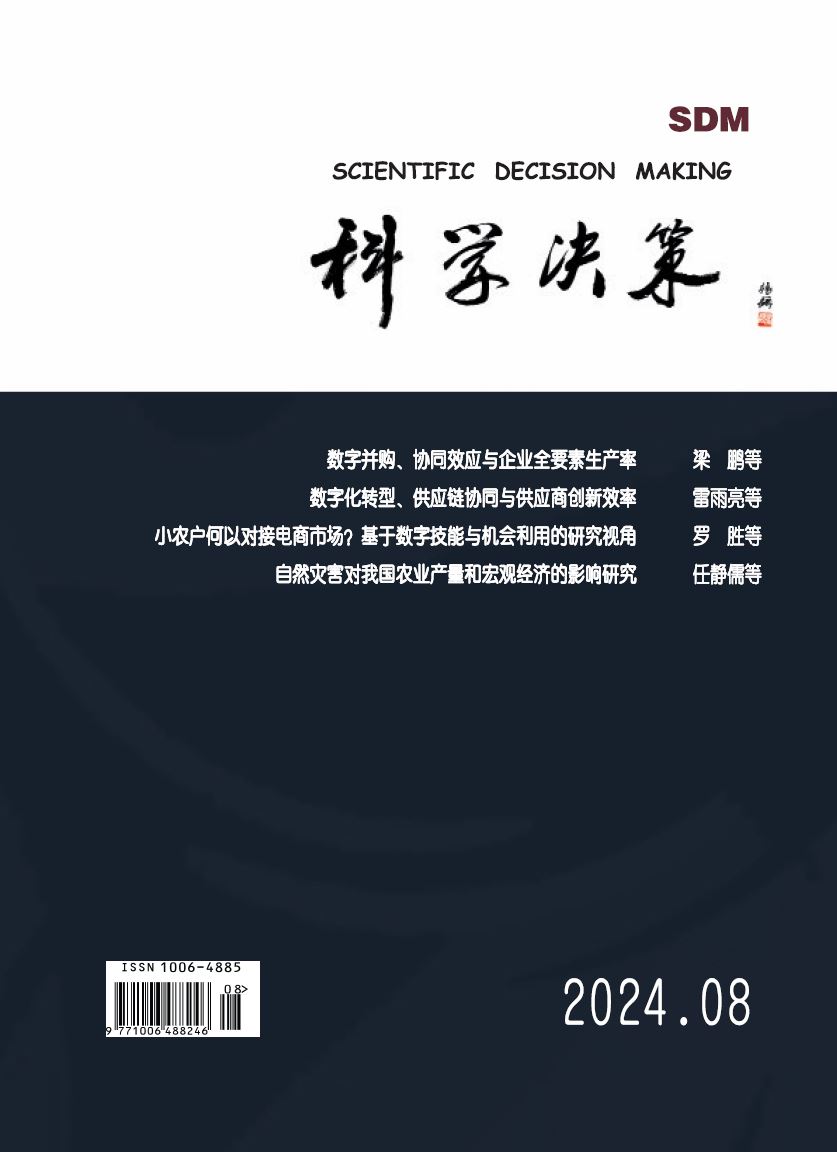The Decision Support of the Securities Portfolio Composition Based on the Particle Swarm Optimization
引用次数: 2
Abstract
Stochastic behavioral methods are becoming increasingly widespread for optimization tasks solving. One of these methods is the particle swarm optimization (PSO). The particle swarm is an algorithm for finding optimal regions of complex search spaces through the interaction of individuals in a population of particles. Its effectiveness and efficiency has rendered it a valuable metaheuristic approach in various scientific fields where complex optimization problems appear. Investment activity in the stock market is an area where the use of optimization techniques is required. The volatility and unpredictability of future stock prices create a situation of uncertainty for decision making in the financial market. Investors are forced to solve a multi-criteria optimization problem when forming an effective securities portfolio. This article proposes to use PSO to compile an optimal securities portfolio based on combined entropy risk index indicators. The portfolio consisted of 8 shares of Russian companies, the shares of each stock in the portfolio were found using particle swarm optimization. The efficiency of the modified algorithm is investigated, coefficients are proposed, and the results of a computational experiment are obtained. Keywords—swarm intelligence, particle swarm optimization, multi-objective optimization task, securities portfolio, indexentropic risk measures. I. SECURITY PORTFOLIO The problem of securities portfolio formation is the actual issue in the modern economy. Depositors are investing assets in securities at the world's stock markets every day. The securities portfolio structure optimization is one of the main decision-making tasks in investment activity in the stock market. It is necessary to form such a portfolio of securities, which will bring the best result within a certain period. It is very difficult to generate an optimal portfolio in the face of uncertainty. In this paper a methodology for forming a securities portfolio based on combined index-entropy risk measures using the particle swarm optimization algorithm is outlined. A securities portfolio is a set of individual types of securities selected by an investor to achieve certain goals. The variety of securities in the market allow to form many securities portfolios different in composition. Investment portfolios may be different in terms of a return and a risk, depending on the current and strategic goals of investors. Let the portfolio structure be represented as the vector X=(x1,x2,...,xn), where xi is the share of the i – th stock in the portfolio (i = 1, n ̅̅ ̅̅ ), i.e. xi ≥ 0, ∑ xi = 1, n i=1 where n is the quantity of stocks. The value of the portfolio Pj(X) at the time moment j is equal to the sum of the product of the price of the i – th stock and its share in the portfolio: Pj(X) = ∑ cijxi, n i=1 () where cij is the price of the i-th stock on the j-th day (j = 1, T ̅̅ ̅̅ ), T is the considered time horizon. The yield of the securities portfolio Vj(X) is calculated by using following formula: Vj(X) = ∑ cijxi n i=1 ∑ ci1xi n i=1 = Pj(X) P1(X) () All financial transactions, including the formation of a securities portfolio, are associated with risk. The volatility and unpredictability of future stock prices (and therefore the portfolio) creates certain risks for portfolio investor, who needs to manage risks reasonably. The investor have to form a portfolio of financial instruments in such a way as to protect against various types of risk. Risk refers to the possibility of non-receipt of the expected income or loss (full or partial) of the funds invested in this security. Risk is a reflection of the uncertainty in the receipt of income by the investor, so each investor has a subjective attitude to the investment process – a measure of risk aversion. The use of optimization techniques in the investment theory began with the solution of the problem of constructing an optimal portfolio based on two criteria – profitability and risk. As a rule, securities with a low risk have a small expected return, and securities that can generate high returns have significant risk indicators. Since a portfolio is a set of various securities, the investor will always face the problem of choosing the currently effective investment portfolio. The choose of investors determined by the presence of a certain 7th Scientific Conference on Information Technologies for Intelligent Decision Making Support (ITIDS 2019) Copyright © 2019, the Authors. Published by Atlantis Press. This is an open access article under the CC BY-NC license (http://creativecommons.org/licenses/by-nc/4.0/). Advances in Intelligent Systems Research, volume 166基于粒子群优化的证券组合决策支持
随机行为方法在优化任务求解中应用越来越广泛。其中一种方法是粒子群优化(PSO)。粒子群算法是一种通过粒子群中个体的相互作用来寻找复杂搜索空间中最优区域的算法。它的有效性和高效性使其成为各种科学领域中出现复杂优化问题的一种有价值的元启发式方法。股票市场中的投资活动是一个需要使用优化技术的领域。未来股票价格的波动性和不可预测性给金融市场的决策带来了不确定性。在构建有效的证券投资组合时,投资者不得不解决一个多准则优化问题。本文提出利用粒子群算法编制基于组合熵风险指标的最优证券组合。该组合由8只俄罗斯公司股票组成,利用粒子群优化方法找到组合中每只股票的份额。研究了改进算法的效率,提出了相应的系数,并给出了计算实验结果。关键词:群体智能,粒子群优化,多目标优化任务,证券投资组合,指数熵风险测度证券投资组合形成问题是现代经济中的现实问题。存款人每天都在世界股市上投资证券。证券投资组合结构优化是证券市场投资活动中的主要决策任务之一。形成这样的证券组合是必要的,它将在一定时期内带来最好的结果。面对不确定性,很难产生一个最优的投资组合。本文提出了一种基于粒子群优化算法的指数熵风险组合方法。证券投资组合是投资者为实现特定目标而选择的一组单独类型的证券。市场上证券种类繁多,可以形成多种不同成分的证券组合。投资组合在回报和风险方面可能有所不同,这取决于投资者当前和战略目标。设投资组合结构表示为向量X=(x1,x2,…,xn),其中xi为投资组合中第i只股票的份额(i =1, n′′n′′),即xi≥0,∑xi =1, n i=1,其中n为股票的数量。投资组合Pj(X)在时刻j的价值等于第i只股票的价格与其在投资组合中的份额的乘积的总和:Pj(X) =∑cijxi, n i=1()其中cij是第i只股票在第j天的价格(j =1, T ` ` T ` `), T是考虑的时间范围。证券组合Vj(X)的收益率用以下公式计算:Vj(X) =∑ci1xi n i=1∑ci1xi n i=1 = Pj(X) P1(X)()所有的金融交易,包括证券组合的形成,都与风险相关。未来股票价格(以及投资组合)的波动性和不可预测性给投资组合投资者带来了一定的风险,需要合理管理风险。投资者必须以这样一种方式形成金融工具的投资组合,以防范各种风险。风险是指投资于本证券的资金无法获得预期收益或损失(全部或部分)的可能性。风险是投资者获得收益的不确定性的反映,因此每个投资者对投资过程都有一种主观态度——一种风险厌恶的度量。最优化技术在投资理论中的应用始于解决基于盈利能力和风险两个标准构建最优投资组合的问题。一般来说,风险低的证券预期收益小,而能够产生高收益的证券的风险指标显著。由于投资组合是各种证券的集合,投资者总是面临选择当前有效的投资组合的问题。第七届信息技术智能决策支持科学会议(ITIDS 2019)版权所有©2019,作者。亚特兰蒂斯出版社出版。这是一篇基于CC BY-NC许可(http://creativecommons.org/licenses/by-nc/4.0/)的开放获取文章。智能系统研究进展,第166卷
本文章由计算机程序翻译,如有差异,请以英文原文为准。
求助全文
约1分钟内获得全文
求助全文

 求助内容:
求助内容: 应助结果提醒方式:
应助结果提醒方式:


